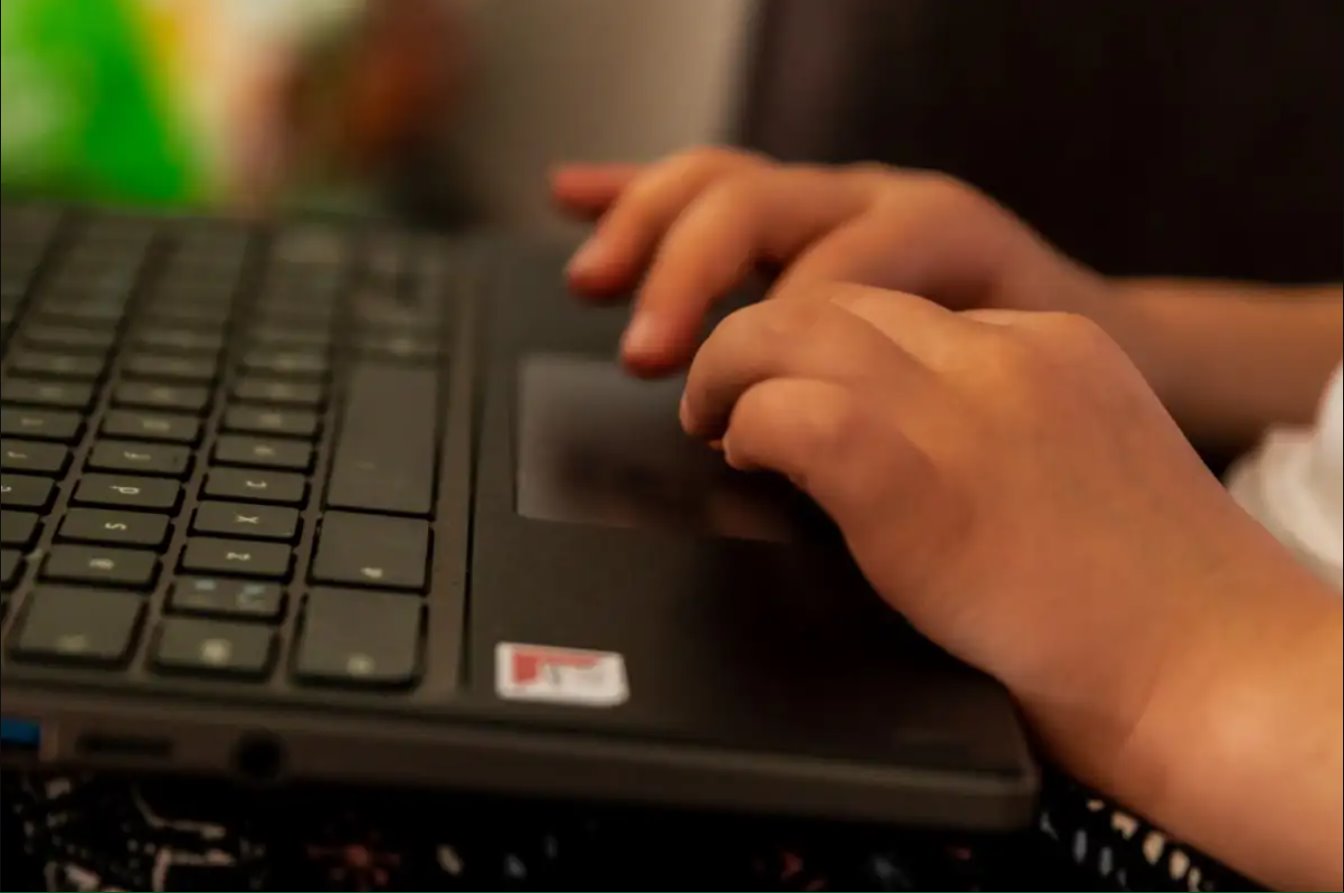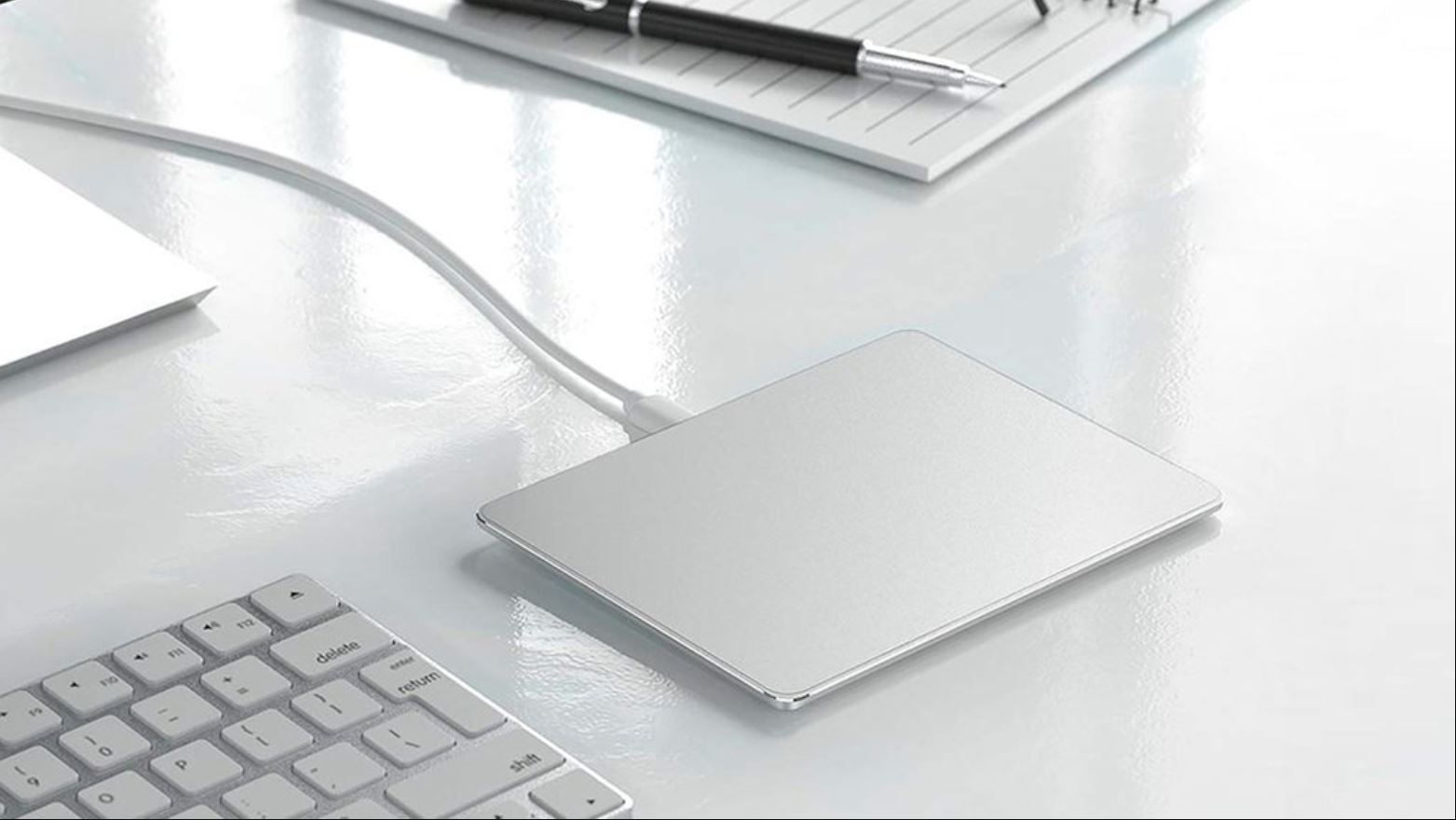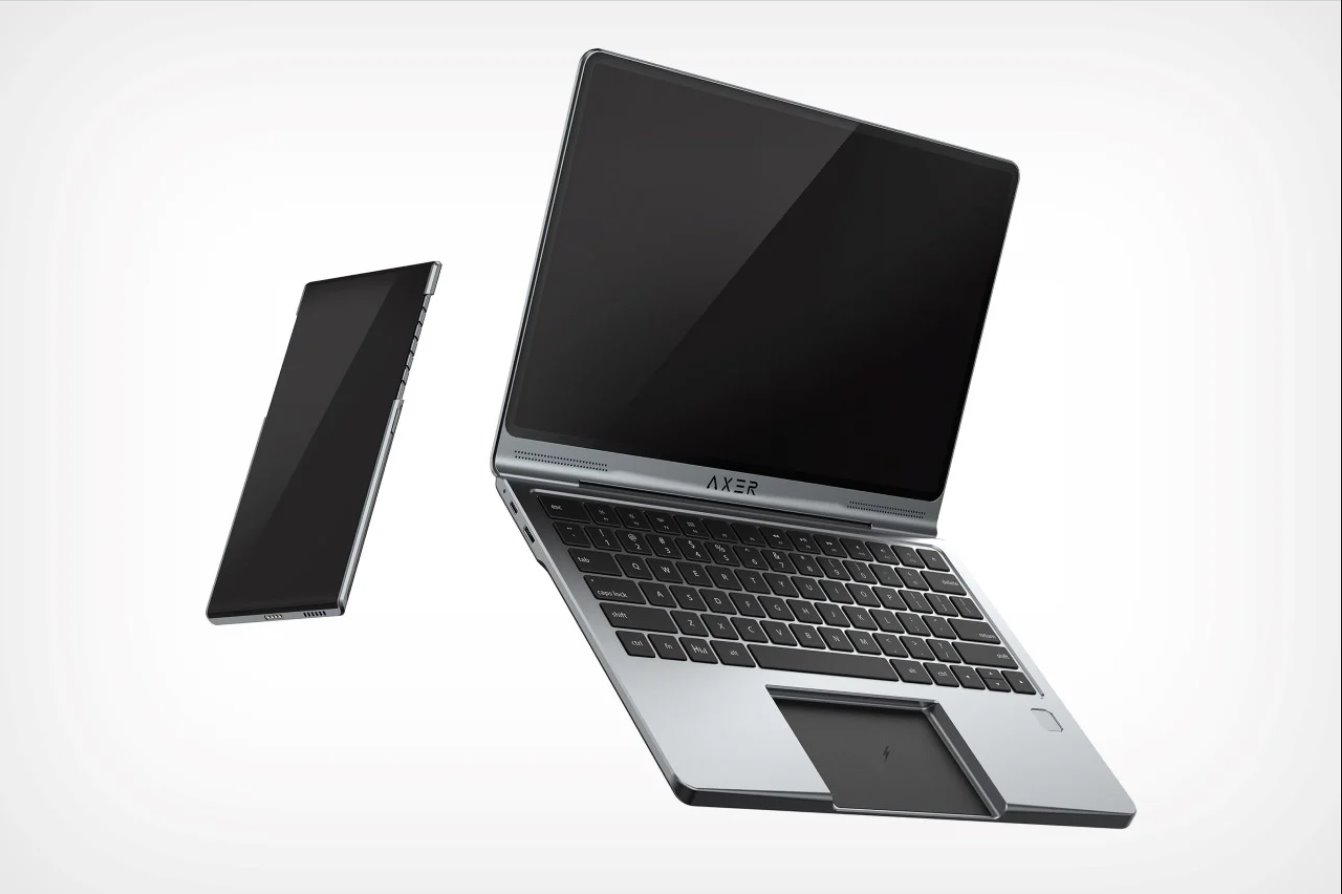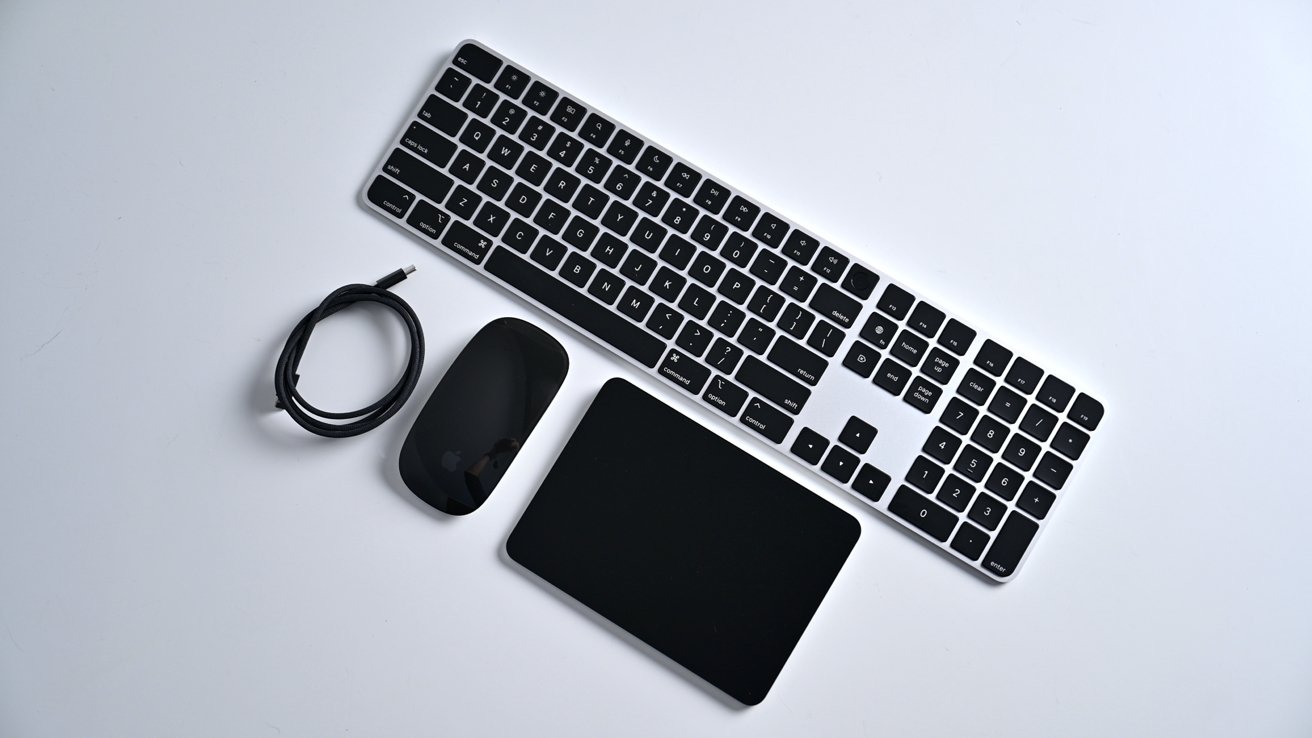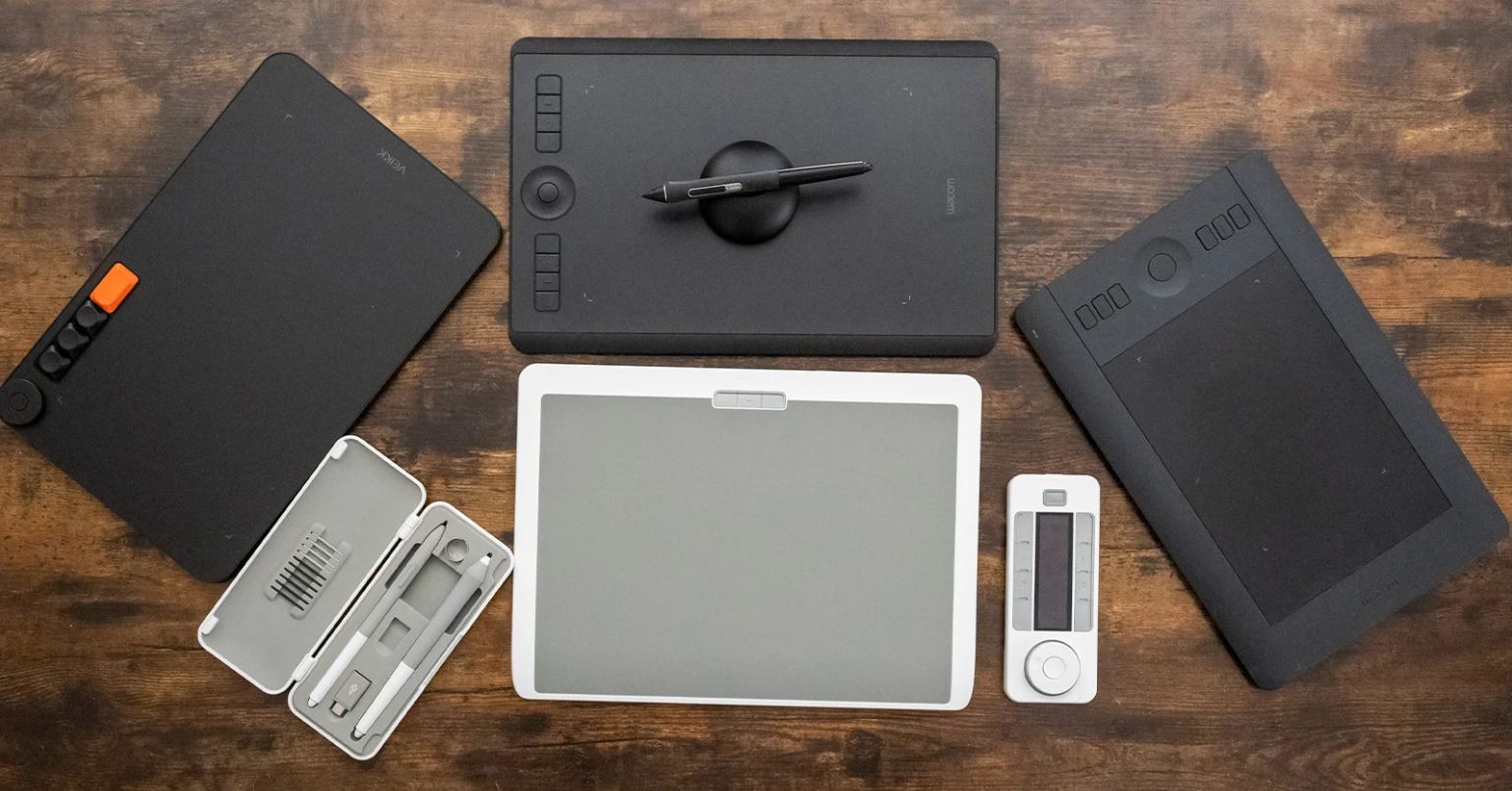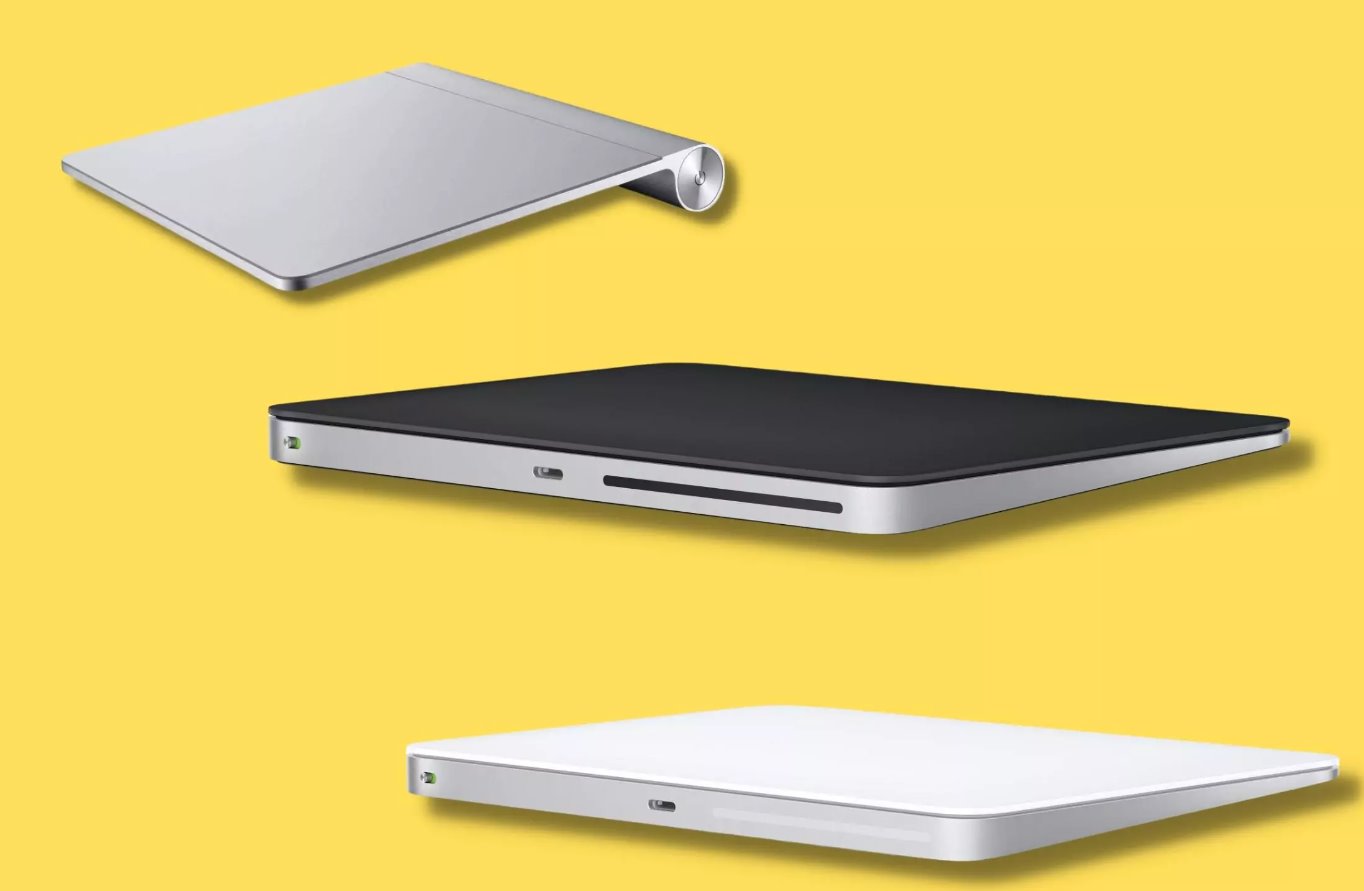Introduction
The trackpad on your Windows 8 laptop or desktop is a crucial input device that allows you to navigate, scroll, and perform various gestures with ease. However, not everyone is aware of the customizable settings available for the trackpad, which can greatly enhance your user experience. In this article, we will guide you through the process of changing trackpad settings on Windows 8, allowing you to tailor it to your preferences and optimize its functionality.
Whether you find the trackpad too sensitive, want to enable specific gestures, or tweak the scrolling behavior, it is essential to understand how to access and customize these settings. By making a few adjustments, you can significantly improve your productivity and comfort when using your Windows 8 device.
In the sections below, we will walk you through the step-by-step process of accessing and adjusting trackpad settings, including sensitivity, gestures, tap-to-click, scroll settings, and more. We will also share tips on personalizing two-finger, three-finger, and four-finger gestures, as well as fine-tuning palm rejection. Finally, we will show you how to save and apply these settings, ensuring that your customized preferences are always in effect.
Accessing Trackpad Settings
Before you can start customizing your trackpad settings on Windows 8, you need to know how to access the trackpad settings menu. Fortunately, Microsoft has made it easy to navigate to these settings. Here’s how you can do it:
- Begin by clicking on the Start button located in the bottom-left corner of your screen. This will open the Start menu.
- Next, click on the gear-shaped icon labeled “Settings” on the left sidebar of the Start menu. This will open the Settings menu.
- Within the Settings menu, locate and click on the “Devices” option. This will open the Devices settings page.
- On the left sidebar of the Devices settings page, click on the “Touchpad” option. This will open the Trackpad settings menu.
Once you have accessed the Trackpad settings, you can proceed to make adjustments according to your preferences. The Trackpad settings menu provides a range of customization options that allow you to fine-tune various aspects of your trackpad’s behavior.
It is important to note that the availability of certain settings may vary depending on the specific hardware and drivers installed on your Windows 8 device. However, the basic trackpad settings, such as sensitivity, gestures, and tap-to-click, should be accessible in most cases.
Now that you know how to access the Trackpad settings on Windows 8, let’s explore the various ways in which you can customize and optimize your trackpad experience.
Adjusting Trackpad Sensitivity
One of the first settings you may want to adjust on your Windows 8 trackpad is the sensitivity. Trackpad sensitivity determines how responsive the trackpad is to your touch gestures. If you find that the trackpad is either too sensitive and registering unintended movements, or not sensitive enough and requiring excessive pressure, you can easily adjust the sensitivity to your liking. Here’s how:
- Within the Trackpad settings menu, locate the “Sensitivity” option. This may be labeled differently depending on your specific device or driver.
- Adjust the sensitivity slider to increase or decrease the sensitivity of the trackpad. Moving the slider to the right will make the trackpad more sensitive, while moving it to the left will make it less sensitive.
- Test the sensitivity by moving your finger across the trackpad. Make further adjustments as necessary until you find the desired sensitivity level.
It’s important to find the right balance of sensitivity that suits your touch preferences. If the trackpad is too sensitive, you may experience accidental cursor movements. On the other hand, if it’s not sensitive enough, you may need to apply greater pressure or repeat gestures multiple times.
Keep in mind that there is no universal “correct” sensitivity setting – it ultimately depends on your personal preference and comfort. Experiment with different sensitivity levels until you find the one that works best for you.
Adjusting trackpad sensitivity allows you to fine-tune your Windows 8 trackpad experience, ensuring smooth and accurate cursor movements. Take some time to explore different sensitivity settings and find the one that provides the ideal balance between responsiveness and control.
Changing Trackpad Gestures
Windows 8 offers a range of trackpad gestures that can help you navigate and interact with your device more efficiently. These gestures allow you to perform various actions, such as scrolling, zooming, and switching between apps, using intuitive finger movements on the trackpad. If you want to change or customize these trackpad gestures to better suit your needs, follow the steps below:
- Within the Trackpad settings menu, locate the “Gestures” or “Touch Actions” option. The exact label may vary depending on your device or driver.
- Click on the Gestures option to expand the menu and display the available gesture settings.
- Review the list of gestures and their assigned actions. You may see gestures like two-finger scrolling, pinch-to-zoom, three-finger swipe, or four-finger tap.
- To modify a gesture, click on the corresponding setting and choose a new action from the available options or assign a custom action of your choice.
- Repeat the process for each gesture you want to change or customize.
By changing trackpad gestures, you can tailor your Windows 8 device to your preferred way of interaction. Whether you prefer vertical or horizontal scrolling, different multitouch gestures, or even adding custom actions, the flexibility to modify trackpad gestures allows for a more personalized user experience.
Keep in mind that some gestures may be more useful in certain scenarios, such as pinch-to-zoom for image viewing or three-finger swipe for switching between applications. Consider your workflow and computing needs when customizing trackpad gestures to optimize your productivity.
Once you have customized the trackpad gestures to your liking, take some time to familiarize yourself with the new actions. Practice using the gestures to navigate through applications, documents, and web pages. With a bit of practice, you will soon become accustomed to the modified gestures and enjoy a more intuitive and efficient trackpad experience on your Windows 8 device.
Enabling or Disabling Tap-to-Click
Tap-to-click is a convenient feature that allows you to perform a left-click action on your trackpad by simply tapping on it, eliminating the need to physically press down the trackpad button. This feature can significantly improve navigation and streamline your workflow. However, if you prefer a more traditional approach or find accidental clicks too frequent, you have the option to enable or disable tap-to-click on your Windows 8 trackpad. Here’s how:
- Within the Trackpad settings menu, locate the “Tap-to-Click” or “Touchpad Click” option. The precise label may differ depending on your device or driver.
- If tap-to-click is currently enabled and you want to disable it, simply uncheck the box or toggle the switch to turn it off.
- If tap-to-click is currently disabled and you want to enable it, select the box or toggle the switch to turn it on.
Enabling or disabling tap-to-click gives you control over the primary button action on your trackpad. By customizing this setting, you can adapt your Windows 8 trackpad to your preferred method of interaction.
It’s worth noting that disabling tap-to-click can help prevent accidental clicks, especially if you have a sensitive trackpad or tend to rest your fingers on the trackpad while typing. On the other hand, enabling tap-to-click provides a more streamlined and efficient way of interacting with your device, reducing the need to use the physical trackpad button.
Take some time to try out both options and determine which one suits your needs and preferences. Consider factors such as the sensitivity of your trackpad, the nature of your tasks, and your personal typing style.
By enabling or disabling tap-to-click on your Windows 8 trackpad, you can further customize your user experience and ensure that your trackpad behavior aligns with your specific preferences and workflow.
Configuring Scroll Settings
Scrolling is a fundamental action when navigating through documents, websites, and other content on your Windows 8 device. The scroll settings on your trackpad determine how scrolling gestures like two-finger scrolling or edge scrolling behave. By configuring these scroll settings, you can tailor the scrolling experience to your liking. Here’s how you can do it:
- Within the Trackpad settings menu, locate the “Scrolling” or “Scroll and Zoom” option. The exact label may differ based on your device or driver.
- Click on the Scrolling option to expand the menu and access the available scroll settings.
- Review the options for scroll direction, scroll speed, and edge scrolling.
- To change the scroll direction, toggle the setting to select between natural (inverted) scrolling or traditional (non-inverted) scrolling.
- To adjust the scroll speed, use the slider to increase or decrease the scrolling sensitivity.
- If available, you can enable edge scrolling to scroll by swiping along the edges of your trackpad.
Configuring scroll settings allows you to customize the scrolling behavior of your trackpad to match your preferences and usage habits. The ability to customize scroll direction, speed, and edge scrolling provides a more personalized and comfortable scrolling experience.
Consider your working style and how you typically interact with content when adjusting scroll settings. If you’re used to a specific scrolling direction or prefer a faster or slower scrolling speed, you can fine-tune these settings to match your needs.
Try out the different scroll settings and experiment with various combinations to find the configuration that feels most natural and intuitive for you. Take some time to familiarize yourself with the new settings and notice how they enhance your scrolling experience on Windows 8.
By configuring scroll settings, you can optimize the scroll behavior of your trackpad, making it more responsive and comfortable for your specific needs. Whether you prefer a more traditional or inverted scrolling direction, faster or slower scrolling speed, or the convenience of edge scrolling, these customizable options empower you to tailor the scrolling experience to your liking.
Customizing Two-Finger Gestures
Two-finger gestures on your Windows 8 trackpad offer a wide range of possibilities for navigating and interacting with your device. These gestures typically involve using two fingers to swipe, pinch, or rotate, enabling you to perform various actions with ease. By customizing the two-finger gestures, you can personalize your trackpad experience to suit your needs and workflow. Here’s how you can do it:
- Within the Trackpad settings menu, locate the “Two-Finger Gestures” or “Multi-Finger Gestures” option. The specific label may differ based on your device or driver.
- Click on the Two-Finger Gestures option to expand the menu and access the available settings.
- Explore the options for two-finger gestures, such as two-finger scrolling, two-finger tap, and two-finger swipe.
- To modify a two-finger gesture, click on the corresponding setting and select a new action from the dropdown menu or assign a custom action of your choice.
- Repeat the process for each two-finger gesture you want to customize.
Customizing two-finger gestures allows you to make the most of the trackpad functionality, making navigation and interaction more efficient. By assigning specific actions to two-finger gestures, you can perform common tasks more quickly and easily.
Consider your daily tasks and workflow when customizing two-finger gestures. For example, you might assign a two-finger tap to open a particular application or assign a two-finger swipe to switch between virtual desktops. By mapping gestures to actions that align with your needs, you can streamline your productivity.
Take some time to experiment with different combinations of two-finger gestures and actions. Test them out in various applications and scenarios to see how they enhance your overall user experience on Windows 8.
Customizing two-finger gestures on your trackpad allows you to take full advantage of the multitouch capabilities, enabling you to navigate and interact with your Windows 8 device more efficiently and intuitively.
Modifying Three-Finger Gestures
Three-finger gestures on your Windows 8 trackpad provide even more functionality and convenience when navigating and interacting with your device. These gestures typically involve using three fingers to swipe, tap, or pinch, allowing you to perform advanced actions with ease. By customizing the three-finger gestures, you can personalize your trackpad experience and make it more tailored to your needs. Here’s how you can do it:
- Within the Trackpad settings menu, locate the “Three-Finger Gestures” or “Multi-Finger Gestures” option. The exact label may differ based on your device or driver.
- Click on the Three-Finger Gestures option to expand the menu and access the available settings.
- Explore the options for three-finger gestures, such as three-finger swipe, three-finger tap, and three-finger pinch.
- To modify a three-finger gesture, click on the corresponding setting and select a new action from the dropdown menu or assign a custom action of your choice.
- Repeat the process for each three-finger gesture you want to customize.
Customizing three-finger gestures allows you to unlock a range of advanced actions and shortcuts on your trackpad. By assigning specific actions or commands to three-finger gestures, you can streamline your workflow and perform complex tasks more efficiently.
Consider the tasks you frequently perform and how three-finger gestures can assist you. For example, you might assign a three-finger swipe to switch between open applications or assign a three-finger tap to open the virtual task view. By mapping gestures to actions that align with your needs, you can boost your productivity on Windows 8.
Take the time to experiment with different combinations of three-finger gestures and actions. Test them out in various applications and scenarios to see how they enhance your overall user experience.
Modifying three-finger gestures on your trackpad gives you more control and flexibility, allowing you to navigate and interact with your Windows 8 device in a way that suits your preferences and workflow.
Personalizing Four-Finger Gestures
Four-finger gestures on your Windows 8 trackpad offer advanced functionality and efficiency when navigating and interacting with your device. These gestures typically involve using four fingers to swipe, tap, or pinch, allowing you to perform complex actions with ease. By personalizing the four-finger gestures, you can customize your trackpad experience and make it even more tailored to your needs. Here’s how you can do it:
- Within the Trackpad settings menu, locate the “Four-Finger Gestures” or “Multi-Finger Gestures” option. The specific label may vary depending on your device or driver.
- Click on the Four-Finger Gestures option to expand the menu and access the available settings.
- Explore the options for four-finger gestures, such as four-finger swipe, four-finger tap, or four-finger pinch.
- To modify a four-finger gesture, click on the corresponding setting and select a new action from the dropdown menu or assign a custom action of your choice.
- Repeat the process for each four-finger gesture you want to personalize.
Personalizing four-finger gestures allows you to unlock a new level of control and functionality on your Windows 8 trackpad. By assigning specific actions or commands to four-finger gestures, you can streamline your workflow and perform advanced tasks more efficiently.
Consider the tasks you frequently perform and how four-finger gestures can assist you. For example, you might assign a four-finger swipe to switch between virtual desktops or assign a four-finger tap to open the Action Center. By mapping gestures to actions that align with your needs, you can enhance your productivity on Windows 8 and optimize your trackpad experience.
Take the time to experiment and explore different combinations of four-finger gestures and actions. Test them out in various applications and scenarios to see how they enhance your overall user experience.
By personalizing four-finger gestures on your trackpad, you can utilize advanced features and shortcuts, making it easier to navigate and interact with your Windows 8 device.
Fine-tuning Palm Rejection
Palm rejection is an essential feature of your Windows 8 trackpad that prevents unintentional touch inputs when you rest your palm on the trackpad while typing or using the device. It helps ensure accurate and precise cursor control by distinguishing between intentional touch gestures and accidental palm contact. However, if you find that palm rejection is not working optimally or if you want to adjust the sensitivity, you can fine-tune this feature to enhance your trackpad experience. Here’s how you can do it:
- Within the Trackpad settings menu, locate the “Palm Rejection” or “Touchpad Rejection” option. The specific label may vary depending on your device or driver.
- Click on the Palm Rejection option to expand the menu and access the available settings.
- Adjust the sensitivity or threshold slider to enhance or decrease the palm rejection effectiveness. Moving the slider towards high sensitivity will result in more accurate palm rejection, while moving it towards low sensitivity might allow for more palm contact to be registered.
- Test the palm rejection feature by resting your palm lightly on the trackpad while typing or performing various touch gestures. Make further adjustments to the sensitivity as necessary until you achieve the desired palm rejection effectiveness.
Fine-tuning palm rejection is crucial to ensure that your Windows 8 trackpad accurately distinguishes between intentional touches and accidental palm contact. It allows for a seamless typing experience and prevents cursor jumps or unintended inputs.
Consider your typing style and the level of palm contact you typically have on the trackpad. If palm rejection is too sensitive, it may inadvertently discard intentional touches, while a low sensitivity might result in accidental inputs. Adjusting the sensitivity allows you to find the perfect balance that suits your palm contact and typing habits.
Take the time to test the palm rejection feature with various sensitivity settings to find the optimal configuration for your needs. It may require some experimentation to strike the right balance, but once you do, it will significantly enhance your trackpad experience on Windows 8.
By fine-tuning palm rejection on your trackpad, you can enjoy a more precise and accurate touch experience, eliminating accidental touches while maintaining seamless and responsive cursor control.
Saving and Applying Trackpad Settings
Once you have customized and adjusted the various trackpad settings on your Windows 8 device, it’s important to save and apply those settings to ensure they are always in effect. Here’s how you can save and apply your trackpad settings:
- Within the Trackpad settings menu, locate the “Save” or “Apply” button. The exact label may vary depending on your device or driver.
- Click on the Save or Apply button to save your customized trackpad settings.
By saving your trackpad settings, they will be applied every time you use your Windows 8 device, ensuring that your preferred customization and adjustments remain active.
Some trackpad settings may require you to restart your device for the changes to take effect. If prompted to do so, follow the instructions provided to complete the process.
It’s important to note that if you make further changes to your trackpad settings in the future, you will need to repeat the saving and applying process to ensure your new adjustments are saved and implemented.
Saving and applying your trackpad settings ensures that your personalized modifications and preferences are maintained consistently as you use your Windows 8 device. It allows you to have a trackpad experience that is tailored to your unique needs and usage patterns.
Take the time to reevaluate and fine-tune your trackpad settings periodically. As you become more comfortable with your customizations, you may find the need to make adjustments to optimize your trackpad experience even further.
By saving and applying your trackpad settings, you can enjoy a customized and enhanced trackpad experience on your Windows 8 device, improving your productivity and overall user satisfaction.
Conclusion
Customizing and adjusting trackpad settings on your Windows 8 device allows you to optimize your trackpad experience and tailor it to your preferences. By accessing the trackpad settings menu, you can modify sensitivity, gestures, tap-to-click, scroll settings, and more.
Adjusting the trackpad sensitivity ensures that it responds accurately to your touch gestures, preventing accidental cursor movements. Changing trackpad gestures allows for intuitive navigation and interaction, while enabling or disabling tap-to-click gives you control over the primary button action on your trackpad.
Configuring scroll settings ensures smooth and efficient scrolling through documents and web pages, and customizing two-finger, three-finger, and four-finger gestures enables advanced actions and shortcuts. Fine-tuning palm rejection improves typing precision and eliminates unintended inputs.
Remember to save and apply your trackpad settings to ensure your customized preferences are consistently applied. Regularly reassess and fine-tune your settings to optimize your trackpad experience.
By personalizing your trackpad settings on Windows 8, you can enjoy a more efficient, intuitive, and comfortable user experience. Take the time to experiment with different settings and gestures to find the configuration that best suits your needs and enhances your productivity.
With these trackpad customization options at your fingertips, you can unleash the full potential of your Windows 8 trackpad and make it an invaluable tool in your daily computing tasks.










